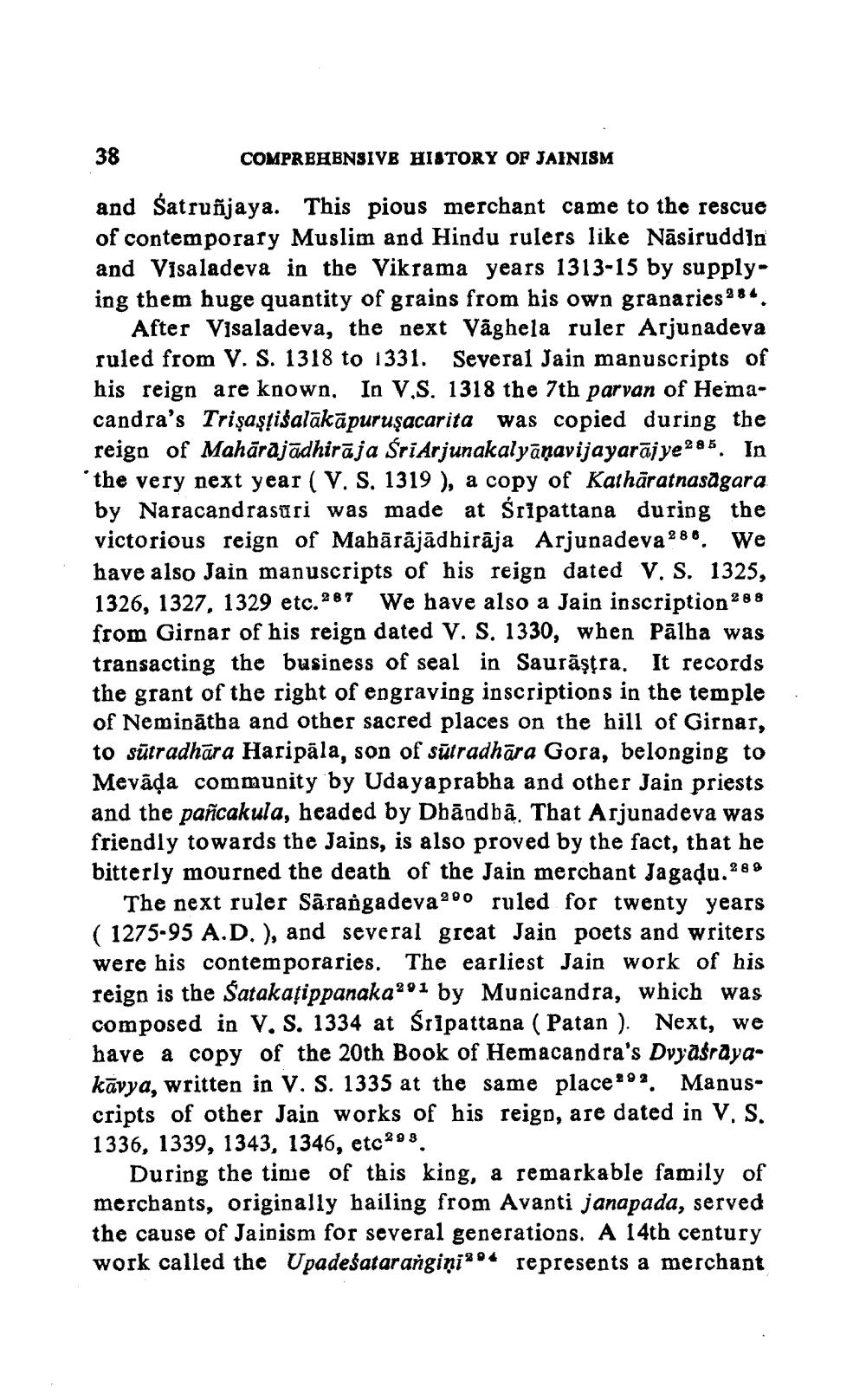________________
38
COMPREHENSIVB HISTORY OF JAINISM
and Satruñjaya. This pious merchant came to the rescue of contemporary Muslim and Hindu rulers like Nāsiruddin and Visaladeva in the Vikrama years 1313-15 by supplying them huge quantity of grains from his own granaries 384.
After Visaladeva, the next Väghela ruler Arjunadeva ruled from V. S. 1318 to 1331. Several Jain manuscripts of his reign are known, In V.S. 1318 the 7th parvan of Hemacandra's Trişaşțišalākāpuruşacarita was copied during the reign of Mahārajādhiraja SriArjunakalyāņavijayarājye285. In 'the very next year (V. S. 1319 ), a copy of Kathāratnasagara by Naracandrasuri was made at Śrīpattana during the victorious reign of Mahārājādbirāja Arjunadeva 286. We have also Jain manuscripts of his reign dated V. S. 1325, 1326, 1327, 1329 etc. 28? We have also a Jain inscription 2 8 8 from Girnar of his reign dated V. S. 1330, when Pälha was transacting the business of seal in Saurāşțra. It records the grant of the right of engraving inscriptions in the temple of Neminātha and other sacred places on the hill of Girnar, to sūtradhāra Haripāla, son of sūtradhāra Gora, belonging to Mevāda community by Udayaprabha and other Jain priests and the pañcakula, headed by Dhāndbā. That Arjunadeva was friendly towards the Jains, is also proved by the fact, that he bitterly mourned the death of the Jain merchant Jagadu.288
The next ruler Sarangadeva 280 ruled for twenty years ( 1275.95 A.D.), and several grcat Jain poets and writers were his contemporaries. The earliest Jain work of his reign is the Satakațippanaka291 by Municandra, which was composed in V. S. 1334 at Sripattana ( Patan ). Next, we have a copy of the 20th Book of Hemacandra's Dvyasrayakāvya, written in V. S. 1335 at the same place? 9 2. Manuscripts of other Jain works of his reign, are dated in V. S. 1336, 1339, 1343, 1346, etc29 8.
During the tine of this king, a remarkable family of merchants, originally hailing from Avanti janapada, served the cause of Jainism for several generations. A 14th century work called the Upadeśatarangiņi**represents a merchant




